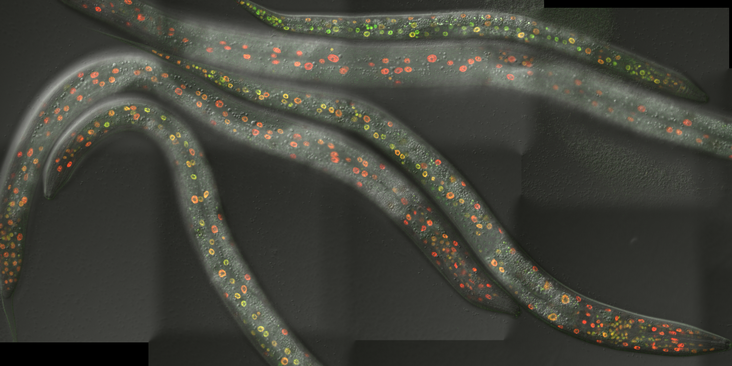Nucleic Acids Research Press Release:
Drs. Giovanna Brancati and Helge Großhans at the Friedrich Miescher Institute for Biomedical Research and University of Basel (Switzerland) have described target specialization of miRNAs of the let-7 family, which are ultraconserved regulators of animal cell fates. They identified target site features that determine specificity and reveal that specificity can be modulated in a manner that allows cells to integrate target site quality and miRNA abundance.
A dogma in the miRNA field has been that the so-called miRNA 'seed' (5') region suffices for target silencing and that, therefore, 'miRNA sisters' function redundantly because they share a seed sequence. However, this view has recently been challenged through experimental target capture, which indicated extensive specialization of individual miRNA family members through seed-distal (miRNA 3' end) pairing.
The investigators determined experimentally features that govern specialization of members of the let-7 family, which are popular model miRNAs with important functions in development and tumorigenesis. Through in vivo studies in C. elegans, they found that extensive seed-distal pairing promotes specificity, but that the extent of specificity is modest, and insufficient to support robust development, unless target sites also contain an imperfect seed match. Their studies go on to reveal that different target site architectures require different miRNA concentrations for silencing. This challenges a model of 'one size fits all', where at a given concentration, a miRNA is either on or off, across all targets. Instead, it supports a rheostat model, where binding site quality and miRNA abundance are integrated into a silencing outcome unique for each target.
Reviewers and editors familiar with the work have stated that the study "is a major contribution piece for the miRNA field" that provides "a convincing set of data that addresses the unresolved question of how miRNA family members can be targeting different transcripts within the same cell", that its "findings are extremelyimportant for the field and exemplify the importance of studying miRNAs and their targets in endogenous contexts" and that the paper "will serve as an important reference for this phenomenon that is likely a prevalent feature of miRNA-mediated gene regulation." They go on to state that "Conceptually, the idea of graded contributions of miRNA paralogs...is also very unique. It is a break from the prevailing but too simplistic view that miRNAs are redundant for as long as they share the seed....and show the importance of deviations from canonical sites (G:U wobble, mismatches etc) for the function of specific miRNAs."
The Großhans laboratory studies developmental timekeeping mechanisms that involve oscillatory gene expression and post-transcriptional regulation by miRNAs and RNA-binding proteins. They combine highthroughput single animal-based methods, including quantitative time-lapse imaging, with genomic, genetic and computational approaches. This research project was supported by the Swiss National Science Foundation, the Novartis Research Foundation, and the Boehringer Ingelheim Fonds PhD Fellowship.
Nucleic Acids Research is a publication of Oxford University Press and is fully open access. Its mission is to provide outstanding, scientist-led evaluation and dissemination of the highest caliber research across a wide range of disciplines focused on the role of nucleic acids and nucleic acid interacting molecules in cellular and molecular biology. Breakthrough articles at NAR describe studies that solve a long-standing problem in their field, or provide exceptional new insight and understanding into an area of research that will clearly motivate and guide new research opportunities and directions. They represent the top papers that NAR receives for publication, and are selected by the Editors based on nominations by authors and/or reviewers, and on the subsequent recommendation of the reviewers and editorial board members.
Read the Publication in Nucleic Acids Research (Open Access)
